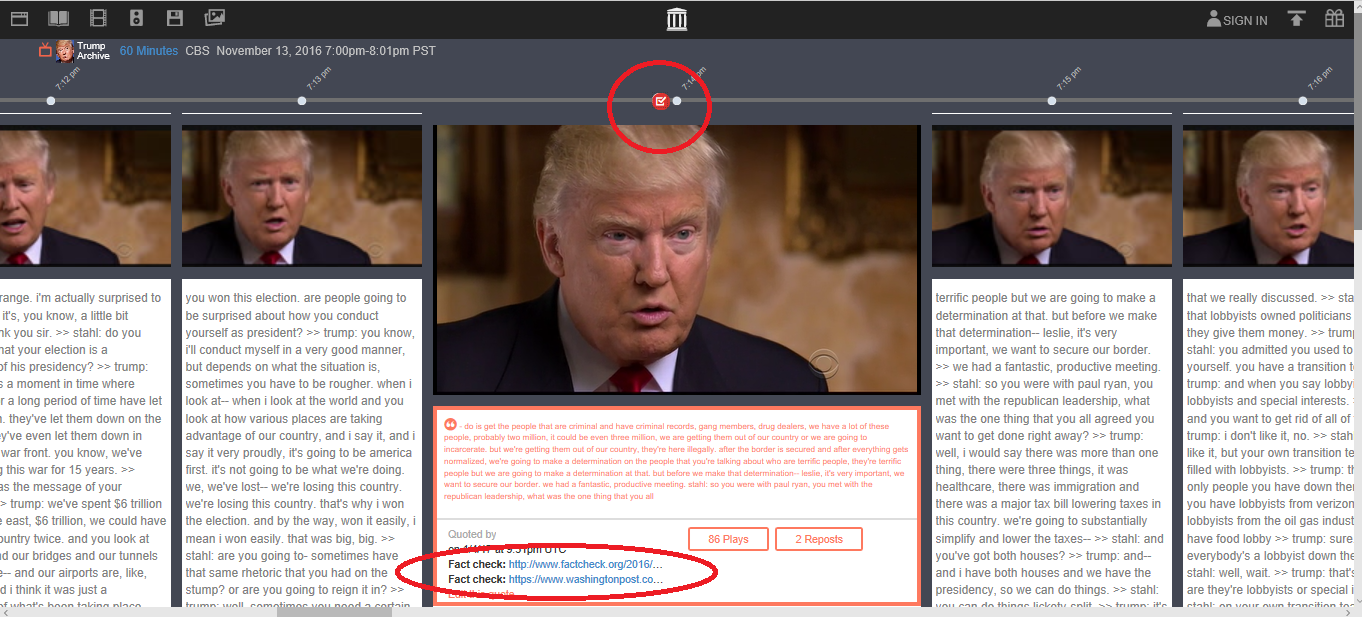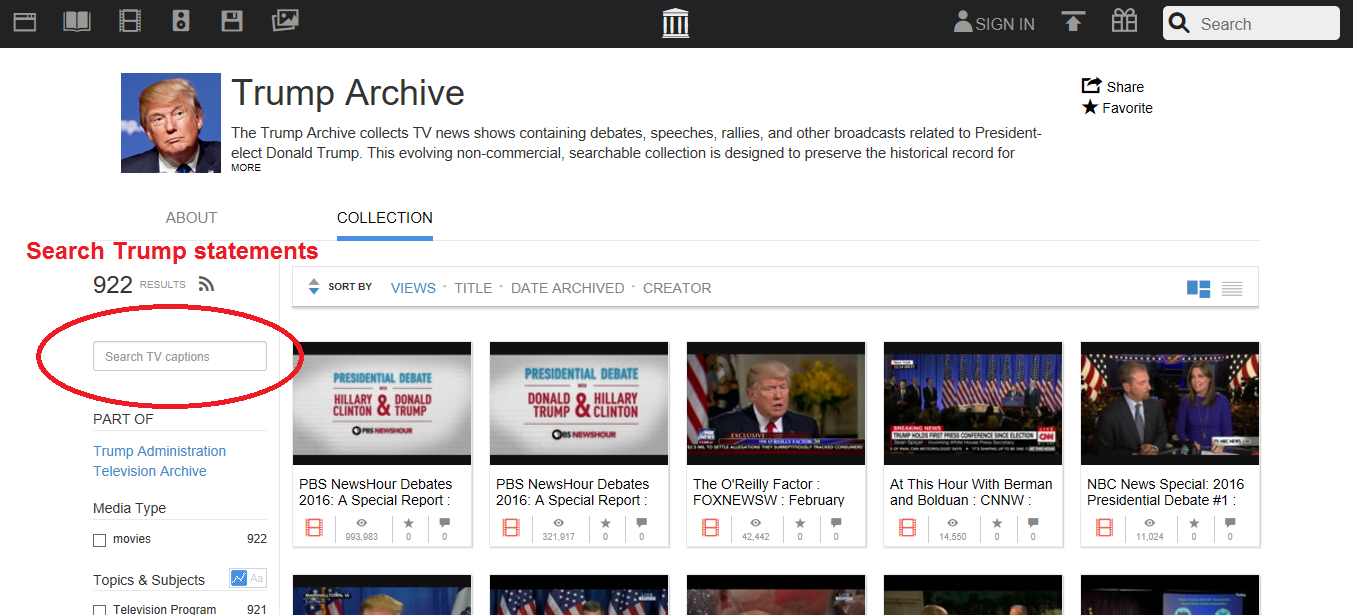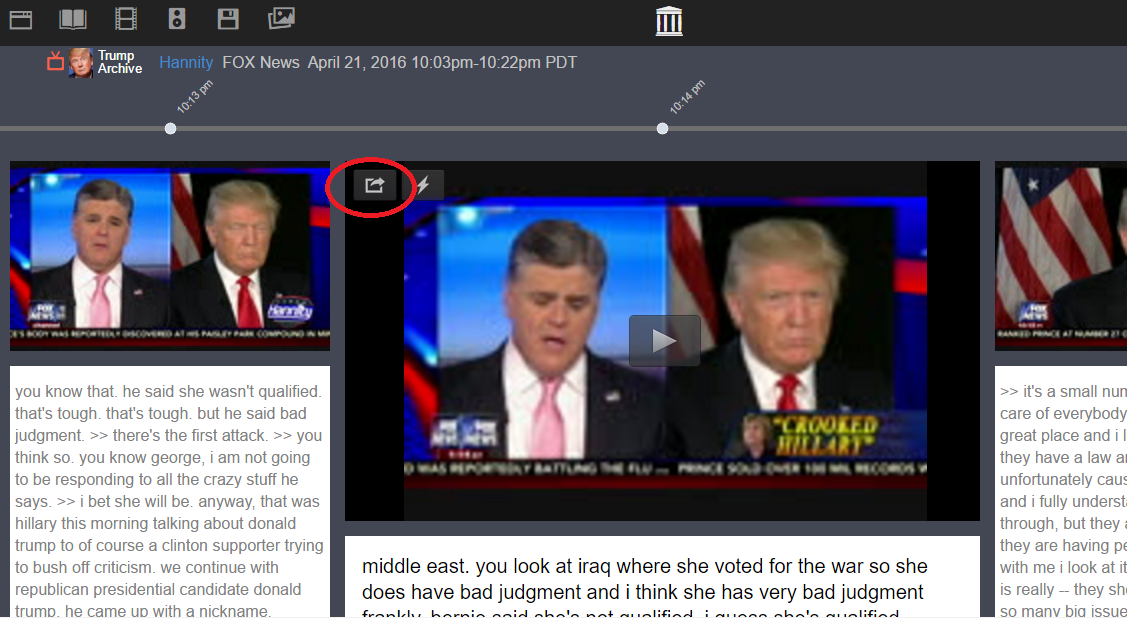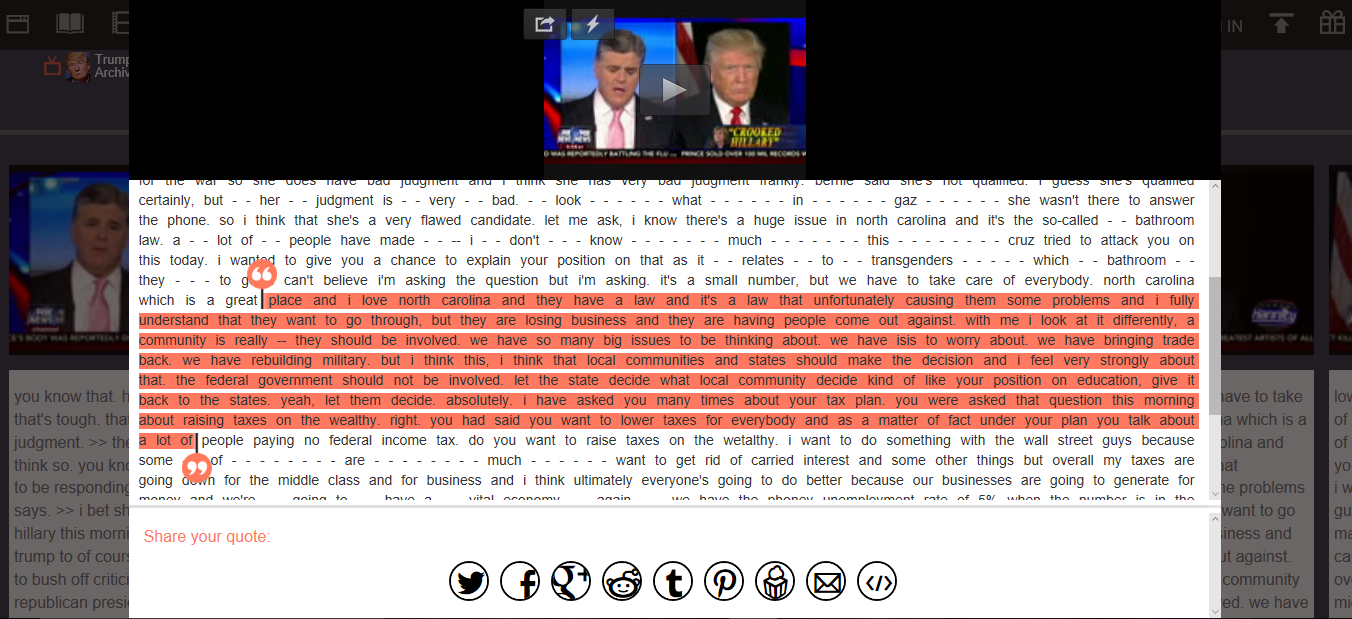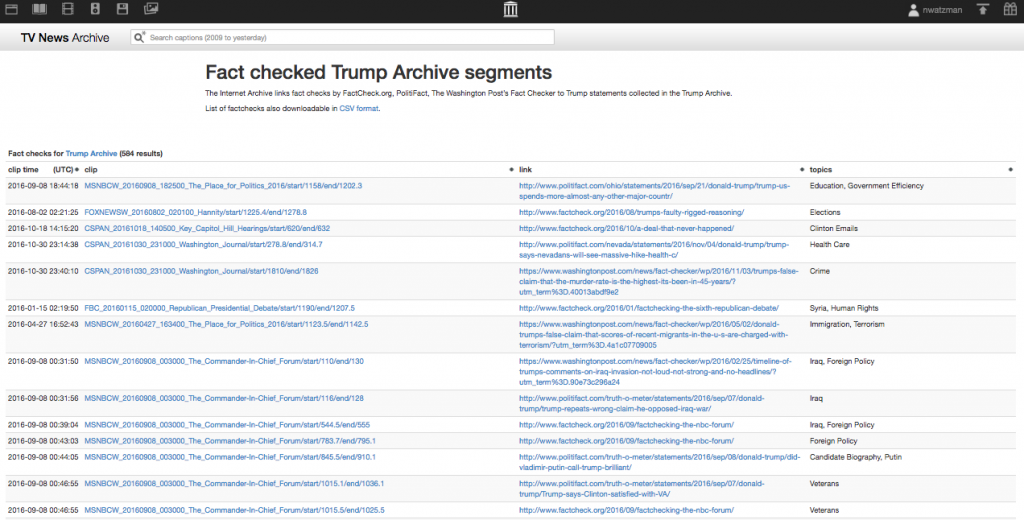By Katie Dahl
In our weekly highlights reel of fact-checked TV appearances by public officials, we feature our fact-checking partners’ reports on sanctuary cities, what Roger Stone knew about the Podesta emails, the financial wealth of Trump’s cabinet, the loss of U.S. factories as a result of China joining the World Trade Organization, and the percentage of the Texas state budget spent on Medicaid.
Claim: 80% of Americans oppose sanctuary cities (depends on the question)
On March 27, Attorney General Jeff Sessions announced a new policy: the U.S. Department of Justice would start holding back funding from cities–known as “sanctuary cities–that don’t enforce immigration law. In doing so, he cited public opinion polling: “According to one recent poll, 80 percent of Americans believe that cities that arrest illegal immigrants for a crime should be required to turn them over to immigration authorities.” White House Press Secretary Sean Spicer has also used this statistic.
Providing context, Michelle Ye Hee Lee wrote for The Washington Post’s Fact Checker, “There’s no perfect polling question, and we recognize sanctuary policies and immigration detainers are not easily distilled into one question.” She noted that other polls show that “when specifically asked about pulling federal funding from sanctuary cities” just 42 percent of Americans agreed. She also pointed out that the 80 percent figure comes from a poll using an opt-in Web panel sample, “which we often warn readers against relying on” unless other measures have proven it accurate over time.
Claim: Roger Stone predicted John Podesta would be a victim of a Russian hack (no evidence)
At a hearing on March 20, Rep. Adam, Schiff, D., Calif., said, “Is it a coincidence that Roger Stone predicted that John Podesta would be a victim of a Russian hack and have his private emails published, and did so even before Mr. Podesta himself was fully aware that his private emails would be exposed?”
Writing for FactCheck.org, Robert Farley reports that one of these assertions is not established fact: “There is nothing in the public record so far that proves Stone, a political operative and longtime Trump associate, predicted the Podesta email hack…”
“Stone says his Aug. 21 tweet about Podesta—that it would soon be Podesta’s ‘time in the barrel’ — had nothing to do with hacked emails, though. Two days prior, Trump’s campaign chairman, Paul Manafort, quit the campaign amid media reports about prior business dealings with Russia-aligned leaders in Ukraine. Stone said he was aware that Podesta also had business ties to Russia, and that journalists were beginning to look into those. That’s what prompted the tweet, he said.”
Claim: Trump cabinet worth more than 100 million Americans (mostly true)
While talking about the president’s budget proposal and calling into question his campaign promise to “drain the swamp,” Sen. Chuck Schumer, D., N.Y., claimed that “if you add up the net wealth of his cabinet, it has more wealth than a third of the American people total–close to 100 million people.”
PolitiFact’s Jana Heigl reported that although “[i]t is impossible to calculate the exact net wealth of Trump’s cabinet… It also doesn’t really matter how rich Trump’s cabinet members exactly are.” According to Gabriel Zucman, an economist at the University of Berkeley, “‘The bottom one-third of American households ranked by wealth own approximately nothing.’” Heigl added that it’s “‘because some either have a very low or even negative net wealth, due to high debt.’” She concluded “‘it does not take a lot to ‘have more wealth than a third of the American people,’ like Schumer claimed, Zuchman added.”
Claim: U.S. lost 60,000 factories since China joined WTO (mostly true)
During a speech in Louisville, Ky., President Donald Trump claimed: “Since China joined—that’s another beauty—the WTO in 2001, the U.S. has lost many more than 60,000 factories.”
Lauren Carroll reported for PolitiFact that “the United States has, in fact, lost more than 60,000 factories since 2001, when China joined the WTO and became a bigger player in the world economy. And quite a few economists believe opening up trade with China has had a significant and negative effect on American manufacturing, though it’s not a universal view.” However, economic historian Bradford DeLong with the University of California, Berkeley, told PolitiFact, “about one-tenth of factory closures over the past decade or so have had to do with China, but that would have happened whether or not China joined the WTO.”
Claim: Texas spent close to 1/3 its budget on Medicaid last year (mostly true)
While advocating the passage of the American Health Care Act, Rep. John Cornyn, R., Tex., said, “We know that the states and the federal government spend an awful lot of money on Medicaid. In Texas, for example, my state spent close to a third of its budget on Medicaid last year, a third of all state spending.”
According to a report from the Texas Legislative Budget Board, as reported by PolitiFact’s W. Gardner Selby, “the 2016-17 Texas budget devoted $61.2 billion in funds from all sources, including state and federal aid, to Medicaid… and that amount over the two years running through August 2017 accounted for 29.3 percent of $209.1 billion in All Funds appropriations.” If you narrow the view to Texas funds spent on Medicaid, “22 percent of state funds alone was appropriated for Medicaid.”
To receive the TV News Archive’s email newsletter, subscribe here.

